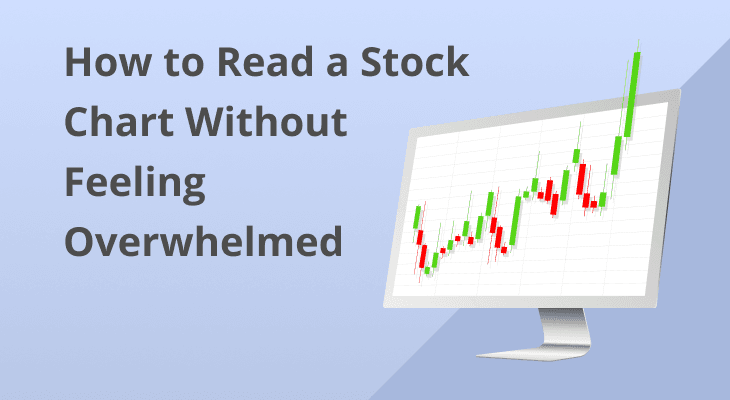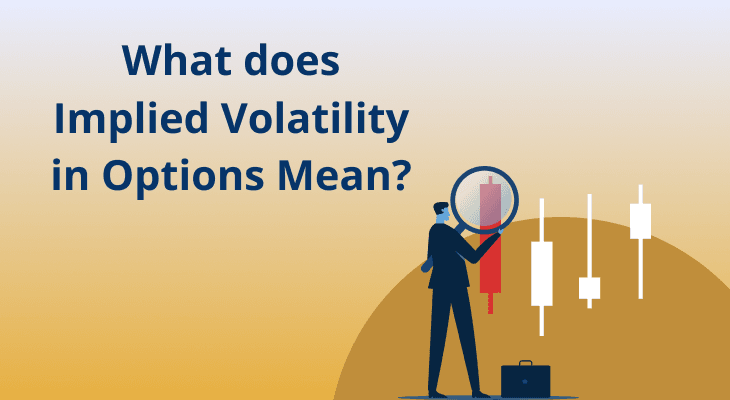
How to Read a Stock Chart Without Feeling Overwhelmed
If you are new to trading, looking at a stock market graph for the first time can feel like deciphering a foreign language. There are strange symbols, fluctuating lines, and chart patterns that seem impossible to understand. But here's the truth: stock charts aren't as intimidating as they look.
Understanding how to read stock charts — or stock market graphs — is an essential skill for any investor. Whether you're a long-term investor or a short-term trader, the ability to interpret a trading chart can help you make more informed decisions. This guide will walk you through the essentials, including what stock charts are, how they work, and how to spot trends using tools like candlestick patterns and moving averages.
By the end, you'll have a clear roadmap for reading stock graphs and conducting stock analysis without feeling overwhelmed.
What Is a Stock Chart?
A stock chart is a visual representation of a stock’s price movement over time. It displays historical data that includes price, volume, and other technical indicators, which help investors understand trends and make decisions.
There are different timeframes (daily, weekly, monthly) and formats (line, bar, and candlestick) available in most stock market graphs. The vertical axis typically shows the stock’s price, while the horizontal axis represents time.
Types of Stock Charts:
- Line Chart: Displays the closing prices over time, forming a line. It's simple and great for spotting long-term trends.
- Bar Chart: Shows the opening, closing, high, and low prices for each period. It’s useful for more detailed stock analysis.
- Candlestick Chart: The most popular type. It shows the same data as bar charts but in a visually intuitive format.
Why Stock Charts Matter
Stock charts are essential for both technical and fundamental investors. They provide a structured way to track the historical price movement and trading volume of a stock, offering invaluable insight into the stock’s behaviour under different market conditions. For long-term investors, stock charts help in identifying macro trends and ideal entry points to accumulate fundamentally strong stocks. For example, an investor holding for years may look for sustained uptrends with occasional corrections to buy more shares.
Short-term traders, on the other hand, use stock charts to time entries and exits based on price action, chart patterns, and momentum indicators. They may focus on minute-by-minute or hourly charts to profit from quick market swings. For example, a day trader might use a breakout above a resistance line to enter a trade and exit within the same day.
Understanding these perspectives allows you to tailor your use of stock charts based on your specific investment goals. Whether you're aiming for long-term wealth building or short-term gains, charts give you a way to read market behaviour with clarity. They allow you to:
- Visualise Price Movement: Instead of scanning through numbers, you can instantly see how a stock has performed.
- Identify Trends: Recognising whether a stock is in an uptrend, downtrend, or moving sideways is crucial.
- Set Entry and Exit Points: For traders, stock charts help determine optimal buying and selling points.
- Understand Market Sentiment: Volume indicators and price movement reveal investor enthusiasm or caution.
Reading stock charts gives you a data-backed edge. Instead of relying on tips or instincts, you learn to interpret actual market behaviour.
Key Elements of a Stock Chart -
Before you start analysing, it’s important to understand the main components of any stock market graph.
- Price Axis (Y-Axis): Displays the price of the stock. Price points rise vertically as the stock value increases.
- Time Axis (X-Axis): This runs horizontally, showing the time period for the chart (days, weeks, months).
- Volume Bars: Located at the bottom of the chart, volume bars show how many shares were traded during a specific time. High volume confirms strong moves.
- Open, High, Low, Close (OHLC): These are standard price points for each period:
- Open: The price when the trading session starts.
- High: The highest price during the session.
- Low: The lowest price during the session.
- Close: The price at the end of the session.
- Trend Lines: These are straight lines drawn on the chart connecting notable highs or lows. They help identify the direction of a trend.
- Support and Resistance:
- Support: The level where the price of a stock tends to stop falling.
- Resistance: The level where the price of a stock tends to stop rising. These levels help in forecasting potential price movements.
Candlestick Patterns Made Simple
Candlestick charts are widely used because they’re visually rich and easy to interpret once you know how. Each candlestick shows four price points: open, high, low, and close.
- Bullish candle (green): When the close is higher than the open.
- Bearish candle (red): When the close is lower than the open.
Common Patterns:
- Doji: Shows indecision in the market. The price opens and closes at nearly the same level. A Doji can signal a potential reversal or pause in trend depending on the context.
- Hammer: Appears after a downtrend. It has a small body with a long lower shadow, suggesting a possible bullish reversal.
- Shooting Star: Appears after an uptrend. It has a small body with a long upper shadow, indicating potential bearish reversal.
- Bullish Engulfing: A red candle is fully engulfed by a large green candle, suggesting strong buying pressure.
- Bearish Engulfing: A large red candle engulfs a green candle, hinting at selling pressure and a trend reversal.
- Morning Star: A three-candle pattern that indicates a bullish reversal. It includes a long red candle, a short indecisive candle (Doji), followed by a long green candle.
- Evening Star: The bearish counterpart of the Morning Star, signalling trend reversal after an uptrend.
- Spinning Top: Has a small body with long wicks on both ends, indicating indecision and a potential reversal.
- Marubozu: A candle with no wicks, indicating strong buying or selling pressure. A green Marubozu often suggests bullish momentum, while a red one indicates bearish sentiment.
These patterns are useful because they provide insight into market psychology. Recognising them allows traders to anticipate market movements based on past behaviours and reactions. For example, if a stock forms a hammer after a long downtrend, it may indicate that buyers are regaining control. In such cases, traders might enter a long position with a stop-loss below the candle’s low.
Spotting Trends with Charts
Trend analysis is key to stock analysis. Identifying a trend helps you understand the stock’s direction.
Types of Trends:
- Uptrend: A series of higher highs and higher lows. Indicates bullish momentum.
- Downtrend: A series of lower highs and lower lows. Indicates bearish sentiment.
- Sideways (Consolidation): Stock moves within a range. No clear direction.
You can draw trend lines by connecting the lows in an uptrend or the highs in a downtrend. These act as visual guides. Breakouts from these trend lines often indicate strong moves ahead. A stock breaking out from a resistance level may continue to rise.
Basics of Moving Averages
A moving average is a line plotted on the chart that smooths out short-term price fluctuations by calculating the average of closing prices over a selected period. This helps traders and investors see the underlying trend more clearly.
Types:
- Simple Moving Average (SMA): SMA is used to calculate the average price over a specific time period such as 50 days, or 200 days. It is best for identifying long-term trends. However, it reacts slowly to recent price changes.
- Exponential Moving Average (EMA): EMA gives more emphasis to recent prices. This makes it more responsive to new information. It’s often used by short-term traders to catch quicker signals.
- Weighted Moving Average (WMA): Similar to EMA but assigns different weights to different prices within the period. It's useful for fine-tuning short-term trades.
Hull Moving Average (HMA): The HMA aims to reduce the lag that is usually associated with orthodox moving averages while maintaining a smooth curve. It achieves this by using weighted moving averages and incorporating the square root of the period in its calculation. The HMA is designed to improve the accuracy of trend detection.
Smoothed Moving Average (SMMA): The SMMA is similar to the EMA but places less emphasis on recent prices, resulting in a smoother line that reacts more slowly to price changes. This makes it suitable for identifying long-term trends without the noise of short-term volatility.
Common Uses:
- Trend Confirmation: If the stock price remains above the moving average, it often indicates an uptrend. If it’s below, a downtrend may be in play.
- Support and Resistance: MAs can serve as dynamic resistance or support levels. Prices often touch-and-go off these lines, providing potential entry or exit points.
- Crossovers: When a short-term moving average (e.g., 50-day) crosses above a long-term one (e.g., 200-day), it forms a "Golden Cross" — a bullish signal. The reverse is called a "Death Cross" and is considered bearish.
- Smoothing Price Data: MAs filter out the 'noise' from random short-term price fluctuations, providing a clearer view of the market trend.
Understanding these moving averages helps traders make more informed decisions about when to enter or exit trades, especially in volatile markets.
Common Mistakes While Reading Charts
Reading charts requires practice, but avoiding some common errors can save you from poor decisions.
- Ignoring Volume: Price movement without confirming volume can be misleading. Always check if a breakout is backed by strong volume.
- Overcomplicating the Chart: Too many indicators can lead to analysis paralysis. Stick to a few reliable ones like trend lines, moving averages, and volume.
- Chasing the Price: Jumping into a stock just because it’s moving fast can result in losses. Wait for confirmation patterns.
- Not Using Stop Losses: Always define your risk. A stop-loss order protects you from excessive losses if the trade doesn’t go as expected.
- Ignoring Broader Context: Charts are just one part of the puzzle. Combine chart reading with fundamental analysis for better decisions.
Conclusion
Mastering the art of reading stock charts doesn’t happen overnight, but with consistent learning, you’ll become more confident. Start simple—learn to identify trends, read candlesticks, and understand volume.
Whether you're analysing a stock market graph for investing or using a trading chart for daily trades, these visual tools help turn data into actionable insights. Keep practising, avoid common pitfalls, and soon you'll be able to navigate stock graphs with ease. Understanding chart patterns and technical signals is a valuable skill for anyone serious about building wealth in the markets.
FAQ
What is the easiest stock chart type for beginners?
Line charts are the simplest for beginners. They show only the closing price over time, helping you focus on long-term trends without getting overwhelmed by too much detail like open, high, and low prices.
How can I quickly tell if a stock is in an uptrend?
Look for a series of higher highs and higher lows on the chart. You can also draw a trend line beneath rising lows. If the stock consistently trades above a moving average, that’s another sign of an uptrend.
What does a candlestick chart show?
A candlestick chart shows a stock's open, high, low, and close prices for a given time frame. The shape and colour of each candle help you quickly understand market sentiment and possible price reversals.
Which time frame should I use to analyse stock charts?
It depends on your goals. Long-term investors use daily or weekly charts to track trends. Short-term traders prefer intraday charts like 5-minute or hourly charts for quicker decisions and momentum plays.
What is a ‘support’ level in stock charts?
Support is a price level where a stock tends to stop falling and often reverses upward. It’s an area where buyers historically come in, making it a good place to consider entering or holding a position.
How do I know when to buy using a stock chart?
Buy signals often appear when a stock breaks above resistance, forms bullish candlestick patterns (like a hammer or engulfing candle), or when a moving average crossover like a Golden Cross occurs. Volume confirmation is also essential.
What is the role of volume in chart analysis?
Volume shows how many shares are being traded. High volume confirms strong price moves, while low volume might signal weak conviction. Watching volume helps you validate breakouts, reversals, and trend strength.
Are moving averages helpful for beginners?
Yes, moving averages smooth out price action and help identify trends. Beginners can start with the 50-day Simple Moving Average (SMA) for long-term trends or the 20-day Exponential Moving Average (EMA) for quicker signals.
How do candlestick patterns help in decision-making?
Candlestick patterns reflect market psychology. Patterns like hammers or dojis can indicate reversals, while engulfing candles show strong momentum. Recognising these patterns helps you anticipate market moves and time entries or exits better.
Can I rely only on stock charts for investment decisions?
While charts offer valuable insights into price trends and sentiment, they shouldn’t be the only tool. Combine technical chart analysis with fundamental research for a more balanced and informed investing approach.


